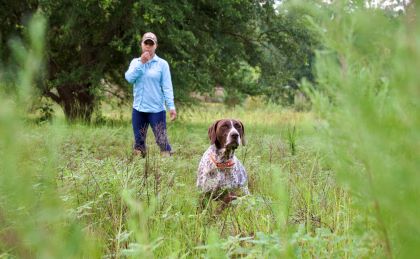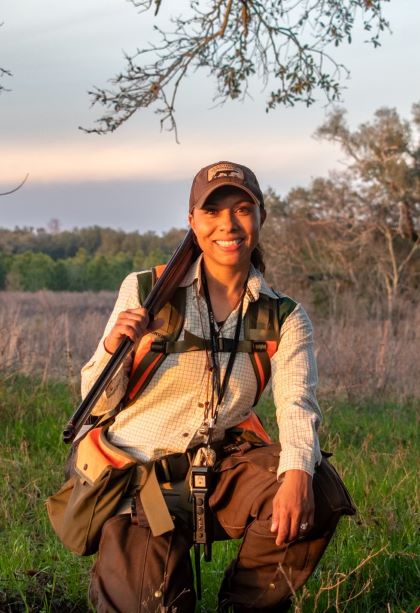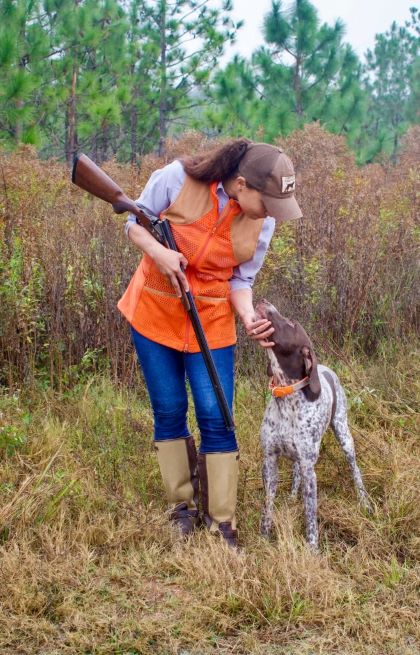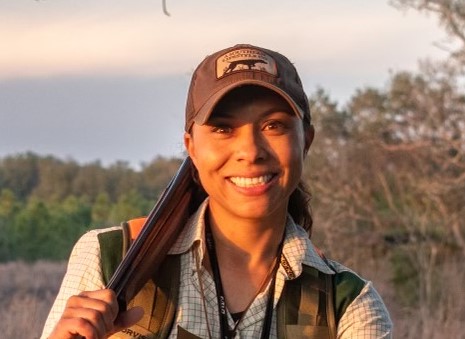The Art of Dog Work
Written by Manda Michaelis | Photos by Brian Michaelis
We are the clay, You are the potter; we are all the work of Your hand – Isaiah 64:8
The original plan was never for us to hunt him. At the time, I did not even know how to hunt but the day we picked up Benny, our one-year-old German Shorthair Pointer, from training and he delivered a bird that had just been shot over him to my hand something in me changed. I had never seen him so happy or seen anything flow as naturally and instinctually as the performance he had just given. I wanted to learn how to train and handle him so we could do it together.
The first order of business was to learn how to hunt. My first hunt was a preserve hunt with “put out” birds, but the land was classic South Georgia Red Hills Piney Woods, and that day I fell in love with the dog work. On more times than I can count I have stopped to admire the paintings of sporting artists in the window of the furniture store in downtown Thomasville, Georgia and that day I felt as if I had stepped onto one of those canvases.

It was a crisp autumn November day, and two perfectly white equally crisp Pointers came out of the box. They began to quarter and work the land weaving in and out of each other until the alabaster figures locked up on a split find. Heads high, tails higher. I had never seen anything more beautiful, and I wanted to be able to create that beauty for myself.
I walked away from that experience with renewed determination to finish Benny’s training and with a commitment to do it exclusively on wild birds, but I did not know how to train him to that level. I needed a mentor.
In December of 2021, while visiting the Jack Hadley Black History Museum in Thomasville, I found a past issue of Garden & Gun Magazine. A photograph of men on horseback and pointers stacked up in the woods had caught my eye. The article featured the Georgia Florida Shooting Dog Handler’s Club, a group of African American men who had been training and handling dogs in the area for generations. I was able to contact them. Club President Neal Carter, Jr. and club member Durrell Smith agreed to mentor me.

From the beginning I heard Durrell reference dog work as a form of art, and I always thought it was a bit of a stretch and simply the eclectic musings of someone who also happened to have a degree in Fine Art and is a visual artist. I had yet to make the connection in my mind until both he and Neal began to impress upon me the importance of “breaking a dog with my hands” This meant not to rely on an e-collar, but to teach using tools like check cords, a woah post and of course physically placing my hands on the dog.
Through training my own dogs, I have learned that they are a product of the work we do with them each day. We get a puppy at eight weeks old, and every day of that puppy’s life as we train them, we leave fingerprints that mold and shape them like potter’s clay into what we want to see out of them. As a dog trainer, I have learned that I must be intentional in my training and honest with myself about whether I am getting the results I am aiming for. If I am not, we go back to the beginning, and make the needed adjustments because at the end of the day the finished product must be nothing less than broke dog work.

Anyone who has come to the South and had the pleasure of hunting in our picturesque piney woods over completely broke statuesque dogs during a thundering covey rise knows what a remarkable sight it is and an experience like none other. This is why this is such a popular focal point in sporting art. After experiencing a heart racing covey rise with my own dog, I realized two things. This would not have been possible without him or without all the training we had done and the only thing more beautiful than those two pointers on that first hunt was my own dog. I had created this with my own two hands.
Training Benny to that level had taken quite a bit of finesse. I had to know when and how much pressure to put on him and when to take it off. I had to find his balance. Picture pottery wheel throwing and the very visible outcome of too much or too little pressure. If I used too much, he would shut down attempting to avoid the situation all together. Too little and he would hunt for himself, having little regard for me. The right amount of pressure and he shines.
I have come to understand that dog work at the highest level IS a work of art. It is first a vision in the artist/trainer’s mind and then with careful and calculated training a story, an experience and a scene emerge that is so powerful that other artists; painters, writers’ sculptors are then inspired to translate it into their own mediums. Today I am happy to agree with Durrell and call myself an artist and I take immense pleasure in sharing that art with others.
Manda Michaelis lives in the Red Hills of North Florida where she has served her community as a Deputy Sheriff for over 20 years. As a first-generation hunter she is passionate in her pursuit of wild birds and is joined by her two German Shorthair Pointers Benny and Grit. Through the help of her mentors, she has learned to train and handle her dogs for the hunt as well as for field trials. The purchase of Benny, her three-year-old GSP, set her on a course to learn to do with him what he loved most which is to hunt birds. Her quest for knowledge led her to the doorstep of the legendary dogmen of South Georgia where she was taken under their wing and taught to The Art of Dog Work. Working alongside these men Manda has heard stories and gained firsthand wisdom and insight into what it means to be a Dog Man or a Dog Woman.

Manda Michaelis lives in the Red Hills of North Florida where she has served her community as a Deputy Sheriff for over 20 years. As a first-generation hunter she is passionate in her pursuit of wild birds and is joined by her two German Shorthair Pointers Benny and Grit. Through the help of her mentors, she has learned to train and handle her dogs for the hunt as well as for field trials. The purchase of Benny, her three-year-old GSP, set her on a course to learn to do with him what he loved most which is to hunt birds. Her quest for knowledge led her to the doorstep of the legendary dogmen of South Georgia where she was taken under their wing and taught to The Art of Dog Work. Working alongside these men Manda has heard stories and gained firsthand wisdom and insight into what it means to be a Dog Man or a Dog Woman.


Comments